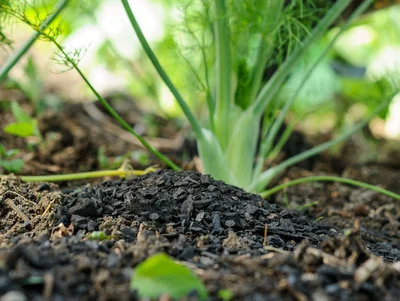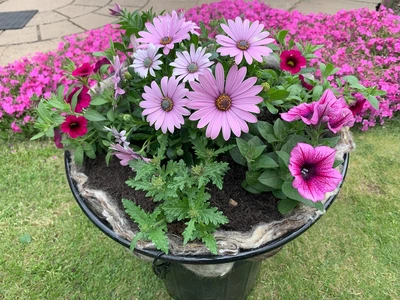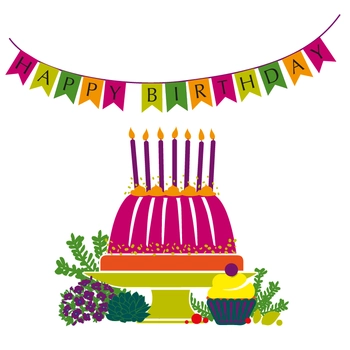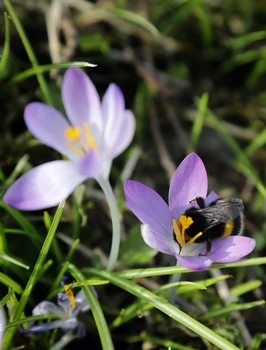
We are increasingly hearing about Wilding or Rewilding in the fight against climate change and the loss of biodiversity, but what is it and what does it mean for gardeners?
Rewilding is a term used to describe the large scale restoration of land through natural processes. Allowing nature to find a balance and in the process provide habitat for many species of plants and animals that are in decline. The best known example of rewilding is of The Knepp Estate near Horsham in West Sussex. The story at Knepp is quite amazing and one that I first discovered when I was given Isabella Tree’s book Wilding which documents the transformation of their 3,500 acre estate from intensive farming to a biodiverse wilderness area in less than 20 years. Not only did they leave the land to recover, they added large scale herbivores like those that would have existed wild in Britain thousands of years ago. Pigs to replicate wild boar, Exmoor ponies, longhorn cattle, several species of deer and even recently beavers. The animals are a critical part of the rewilding process, disturbing the ground, grazing and dispersing seeds.
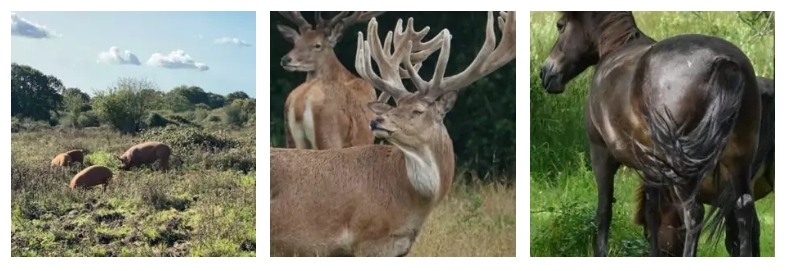
So it’s all very well having 3,500 acres to transform, but there are certainly lessons for us to learn on a smaller scale to really make a difference in our gardens. Let's put it in some perspective – we have 33 million gardens in the UK, covering 433,000 hectares, which is more than 1/5 the size of Wales. In England alone our gardens are more than 4.5 times the area of all the national nature reserves put together. Plus, it's not just about plants – 16% of gardens have a pond amounting to ¼ the size of Lake Windermere – ponds are one of the most important wildlife-dense habitats in our gardens. Finally, there are over 30 million trees in gardens – this amounts to ¼ of our national trees that aren’t in woodland. So there is lots of potential land for wildlife if we just adapt the way we garden and think about gardens.
Perception – Beauty is in the eye of the beholder
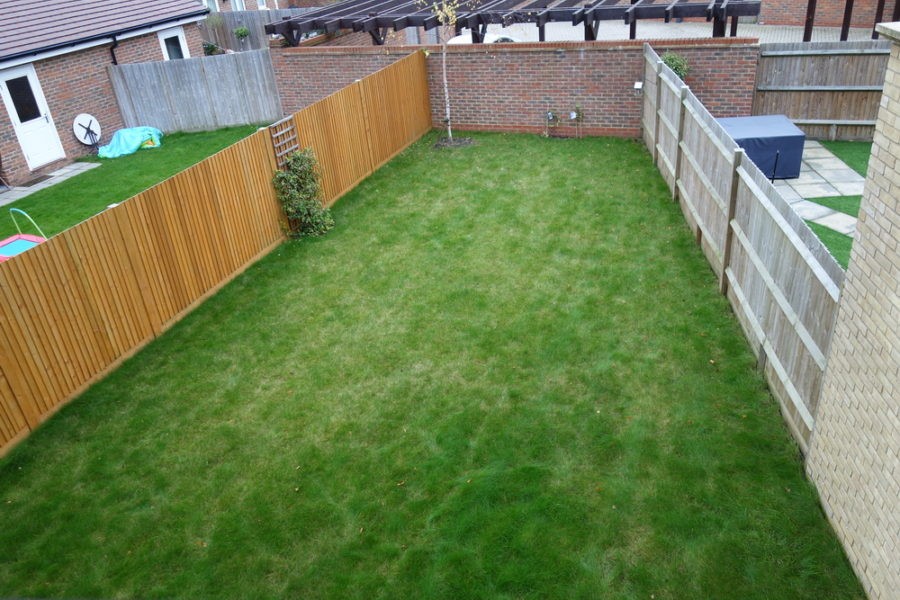 Before you get stuck into transforming your plot, the first thing to change is your perception of what a garden is and how it should look. We have been conditioned to believe that a beautiful garden is one that is controlled and neat. We are taught that to garden is to impose our will on nature, clipping our lawns to perfect green carpets, killing any bugs that stray onto our roses, annihilating any weeds that dare to grow in our borders and clearing away any leaves or mess. So sit back and consider what is beautiful, look more closely at what natural processes are happening outside your back door. There is beauty in nature, learn to appreciate it, the wildlife and even the weeds. After all ,who decides what is a weed or a wildflower? The definition of a weed is simply a plant in the wrong place, so you can decide what is right or wrong in your garden! Take the simple Dandelion for example – seen as a weed by many – it is actually a beautiful flower from the daisy family. The seedheads are loved by children and it is an important source of nectar for early pollinators. Plus, it’s also edible with lots of health benefits, so just pretend any that pop up in your veg garden are a salad crop! One of the most beautiful sights in nature is a wildflower meadow buzzing with bees and butterflies and this can certainly be replicated on a smaller scale whatever space you have available.
Before you get stuck into transforming your plot, the first thing to change is your perception of what a garden is and how it should look. We have been conditioned to believe that a beautiful garden is one that is controlled and neat. We are taught that to garden is to impose our will on nature, clipping our lawns to perfect green carpets, killing any bugs that stray onto our roses, annihilating any weeds that dare to grow in our borders and clearing away any leaves or mess. So sit back and consider what is beautiful, look more closely at what natural processes are happening outside your back door. There is beauty in nature, learn to appreciate it, the wildlife and even the weeds. After all ,who decides what is a weed or a wildflower? The definition of a weed is simply a plant in the wrong place, so you can decide what is right or wrong in your garden! Take the simple Dandelion for example – seen as a weed by many – it is actually a beautiful flower from the daisy family. The seedheads are loved by children and it is an important source of nectar for early pollinators. Plus, it’s also edible with lots of health benefits, so just pretend any that pop up in your veg garden are a salad crop! One of the most beautiful sights in nature is a wildflower meadow buzzing with bees and butterflies and this can certainly be replicated on a smaller scale whatever space you have available.
Take this new build garden for example – how beautiful does it look to you and how friendly does it look for any wildlife? Sadly, this is so often what a new house will be sold with, but it does give huge opportunities to turn this into a wildlife haven just by adding some lovely plants and letting nature play its part.
Led by Nature
The next step is to let nature take the lead and work with the conditions that already exist. For example, is it sunny, shady, dry, wet or maybe all of those things in different areas? What is the soil like – sandy, clay, rich, acid or chalky? Fighting against the natural conditions in any garden makes it hard work and plants are much less likely to survive and thrive where they don’t feel happy. There is a good horticultural saying that applies here – Right plant, Right place - choose plants that enjoy the conditions you have and you will get great results. The weeds (wildflowers) will tell you what they enjoy as they will grow quickly and spread in the right spots – if you left your garden what would thrive? Learn from this and choose plants that enjoy the same conditions.
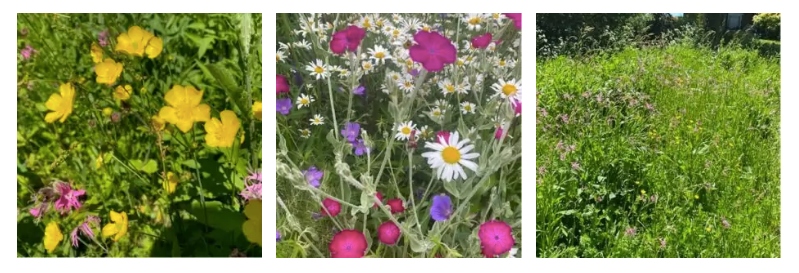
That is not to say that you shouldn’t do anything with the soil to help it along. In woodland, the leaves that fall each year compost down and create nice rich humus on the forest floor. You can replicate this by adding organic matter – homemade compost, manure, mulch, leaf mould or even leaving some fallen leaves through the winter to rot down. Good soil helps support the plants and promotes healthy growth. Healthy plants are much more likely to survive tough conditions like a drought or wet period and be much more resilient to any pests and diseases that come their way.
Talking of pests and diseases, what to do if you get an infestation of bugs and beasties attacking your plants – well my advice is to wait and see. So often, nature will find its own balance – for example the ladybirds lay their eggs near an aphid colony - their larvae love greenfly and will munch their way through thousands of them in no time. At Millbrook we have stopped selling any synthetic pesticides as they also kill beneficial insects such as bees which seems rather counter intuitive to me. There are other ways to deter, trap or deal with some pests, including nematodes, which are natural predators to the infestation you are trying to deal with. Just ask our team to help with any individual challenges you have. One product I would recommend is Rootgrow – this is a beneficial fungi that you apply to the roots of anything you are planting. The fungi encourage the roots to grow faster and stronger, helping the plant to become established more quickly. Plus, it's made in Kent so you couldn’t get much more local!
Try to use natural materials on your garden – avoid plastic grass – another thing we have stopped selling for I hope obvious reasons!
Variety is the spice of life
To any wildlife, your garden makes up a small part of their habitat and so it is important to think about your patch in terms of the wider landscape. What is already around you that you could add to or compliment? For example if your neighbour has an oak, think about planting a different tree perhaps of a different size, for example a crab apple, so there is more variety in the local area. Watch how birds move around – they need shelter and jumping off points to access food safely. What habitats can you add in your space – you may be able to create a boggy and wet area or a dry stony patch which are all beneficial. Can you add a pond or water feature? Ponds are great for birds to drink from and wash in. How easy is it for wildlife to move from one garden to the next? Hedgehogs, whose numbers have dramatically dropped, need 25 – 50 acres for their territory to survive. It is thought that one of the reasons for their decline is the inaccessibility to move from one garden to the next in a neighbourhood. Simply cutting a hedgehog-sized hole in your fence could help.
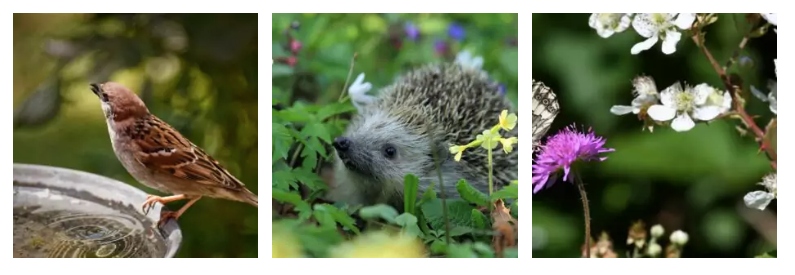
A wild garden needs lots of different plant varieties of all shapes and sizes. I have already mentioned trees and however big or small your space there is always a tree to suit. A wide variety of shrubs (woody plants) is also important, evergreen, deciduous (lose their leaves), flowering, berried, big and small to create layers. One of the critical things that they have learnt at Knepp is the importance of scrub, overgrown thorny growth particularly of brambles. You may not be a lover of brambles in your garden, but don’t underestimate the importance of them in nature. Their flowers are fantastic for pollinators, the blackberries an important food source and the shelter they provide is both good for animals and birds but also to protect tree saplings from herbivores. Who needs a plastic tree guard when you have got thorny scrub protecting baby trees. If you look at a patch of scrub you may see a sapling or two popping up and this is the process for creating new woodland. If you don’t fancy a blackberry patch in your garden there are ornamental alternatives such as Berberis and Pyracantha which can make a brilliant hedge or climber giving flowers, berries and shelter.
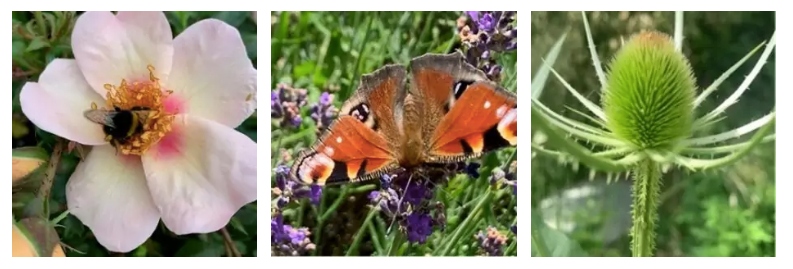
There has been much discussion about whether native plants are better for wildlife than ornamental and in some cases they are. Some species rely on particular native plants to survive, particularly some caterpillars. However, in general, bees and butterflies don’t care where the plant has come from as long as there is lots of accessible nectar available for as much of the year as possible. My top tips for choosing flowering plants are:
- Choose a selection of flowers for all seasons – bulbs such as crocus and Hellebores for early spring right through to late-flowering Sedums and Echiums for Autumn.
- Go for lots of different shapes of flowers
- Daisy shapes such as Asters, Rudbeckias and dandelions.
- Thistles such as Cirsium, Echinops or teasel.
- Bell shapes such as foxgloves, bee balm (Monarda)
- Flat umbellifers like Yarrow (Achillea) or Sedum.
To be honest, there are masses of plants to choose from, but avoid double flowers – which have been bred for show and the nectar is not accessible to any insects, for example many roses. If you want a rose to attract insects, look for simpler open flowers such as Rosa For your eyes only.
- Sow a meadow, turn some of your lawn over to wildflowers. Choose perennial (flower year after year) meadow seeds. They can even be sown in pots if you don’t have much space. (See my Love your Long Lawn Blog for more information)
Leave it
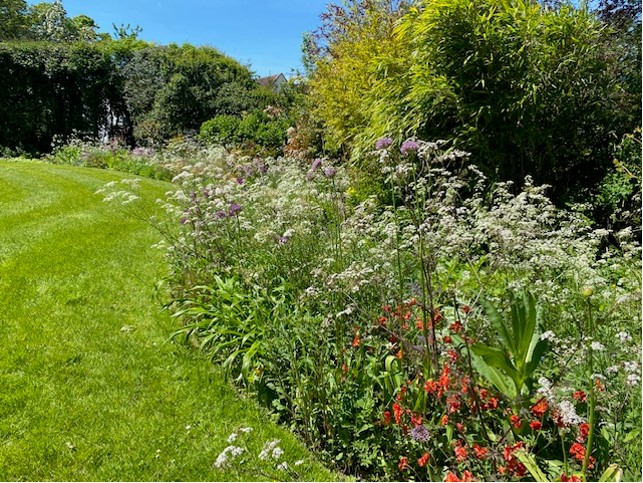 So, having embraced all the above and added variety to your patch, the next thing is to leave it and let it become a bit untidy. Mow less - leave your lawn longer and let the daisies and dandelions grow - not only are they good for pollinator,s a longer lawn is much more able to withstand a drought or being waterlogged. Personally, I find a diverse lawn full of different grasses and flowers much more interesting than a stripy short bright green one.
So, having embraced all the above and added variety to your patch, the next thing is to leave it and let it become a bit untidy. Mow less - leave your lawn longer and let the daisies and dandelions grow - not only are they good for pollinator,s a longer lawn is much more able to withstand a drought or being waterlogged. Personally, I find a diverse lawn full of different grasses and flowers much more interesting than a stripy short bright green one.
In agriculture, we are hearing about no-till farming – leaving the soil structure undisturbed to support plant growth and keep carbon locked up in the ground. The new gardening trend is ‘no dig’, forget the double digging. Let nature do its own work, if you apply a mulch or manure the worms will drag it down into the soil and help take the nutrients to the roots. As long as plants aren’t completely buried, leave leaves over Winter to break down slowly. They provide a great habitat for ladybirds and other insects through the cold snaps.
Let your hedges and shrubs grow a bit bushy and leave piles of wood or even a dead tree or shrub. The process of breaking down dead timber is an essential natural process and hugely increases the biodiversity in your garden. Leave some weeds in your flower beds – for example, I have a lot of cow parsley in one of my borders. It looks amazing when it is in full flower and so I leave most in place, but spot-weed it out when it is in danger of completely taking over.
Let your garden find its own balance – most bugs have their natural predators and so often without your intervention an infestation will be dealt with pretty quickly.
Be the herbivore
Having said all of the above – remember it is still your garden. How long you want to leave your lawn, how shaggy your hedges and how many weeds you love as wildflowers are up to you. Remember, in wilding, herbivores are an essential part of the process. Stopping the land turning into a forest, pruning scrub, scraping the soil and even the beavers cutting down trees are really important to keep the ecosystem healthy. In your garden you are the herbivore, pruning, mowing and hoeing, you are replicating the grazers and plants have evolved to grow stronger when pruned or clipped.
It's good for the garden to evolve over time - don’t be afraid of leaving some bare patches, they are great for solitary bees to make their nests. The process of hoeing replicates the digging of wild boar and creates new tiny eco-systems, plus the robins love to follow you round gobbling up the exposed bugs. Sometimes plants get too big and need removing or cutting hard back, replace them with something new. Experiment with what works for you and watch how nature responds.
Finally, spread the word about what you are doing and why. Your neighbours may not love your scruffy lawn, but perhaps they will learn to embrace it if they understand the benefit to wildlife. Work with your neighbours to create a really diverse habitat in your neighbourhood. Think about the difference that could be made across a whole town or city if we all took this approach.
Where to next?


